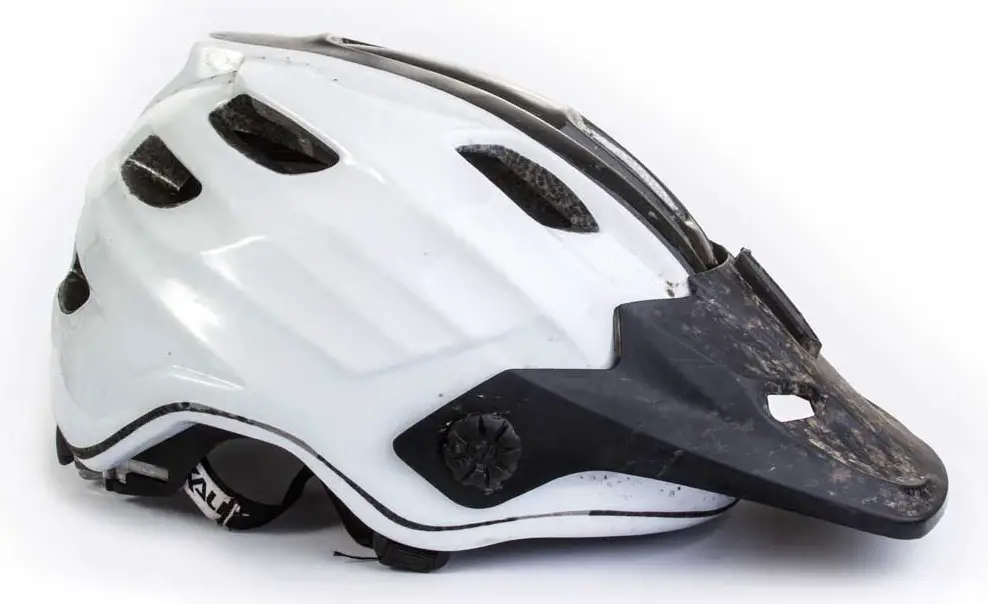By Chipps
First published in Singletrack Magazine issue 96
Kali is pretty new on the helmet scene, but in a few short years it has positioned itself as a leader in stylish, affordable and cleverly designed helmets.
Under the hood, so to speak, there is a lot going on with the Maya. Although it uses regular EPS (expanded polystyrene) to absorb impacts, Kali has been campaigning for the industry to use more absorbent EPS in its helmet construction. Kali has developed a composite of softer and harder foam in its helmets, using what it calls its ‘Composite Fusion Plus’ technology. This means that where the two materials meet, they do so in a mesh of opposing cone shaped spikes; as these are impacted, the tip of the cones will crush first with little effort, dissipating force in all directions and taking progressively more force as the cone gets thicker down its length.
All of this is hidden away so the rider will never see it (unless they bandsaw a helmet in half), but the benefit of this is that tougher foam can be placed on the outside surface of the helmet lining, where it’ll be able to absorb collisions with rocks, while a softer (and lighter) foam can be placed nearest your skull, designed to cushion the head more under impact by crushing more readily. And all of this can be made more slimline for the same protection than a helmet that just uses softer EPS. Still with us? Good.
Regardless of the technology hidden in a helmet, it’s not going to get bought, or worn, unless it looks good, and the Maya certainly ticks that box for me. There are 12 vents to take care of ventilation and the front five are backed by a bug net to limit ‘bee/helmet/scream/crash’ scenarios. The in-moulded shell also covers the bottom edge of the helmet, where many lids can start showing wear from being thrown on the ground when fixing punctures.
In keeping with other helmets of this type, the temple straps come out of the base of the lid, which keeps the straps from rubbing on your sweaty face and allowing room for a range of stylish sunglasses. If you’re a goggle wearer, then there’s a channel round the back of the helmet to keep your strap in place, though there’s no permanent retention system. There is a retention system for your head however that is easy to do up with one hand, or loosen with two. Helmets come in black, black/white and ‘EnduroBro Blue’. Sorry about that.
Up front, there’s a long, slightly flexible (and ‘unbreakable’) peak, adjusted by three plastic thumbwheels, that is very unobtrusive when the helmet is on. The peak is of additional interest due to having an accessory clip moulded into the back edge of it. The helmet comes complete with a GoPro mount and a cylindrical mount for head lamps. It takes a tool-free second to swap between them.
I’ve been riding the Maya as my only peaked helmet since June and I really like it. The helmet fits me a lot better than many similar extended-coverage helmets seem to and I’ve found it to be comfortable and durable in use. The helmet isn’t as vented as a cross-country lid, but then none of this style are, which makes it great for winter jaunts. The cam buckles under chin and under ears make the fit simple to adjust for Buffs and haircuts and, more importantly, they stay put.
I’ve not used the accessory clip much, but it’s a clever, temporary and simple way of adding a camera or helmet light without having to dedicate a helmet to the Tinky Winky look.
Overall:
It’s a great-fitting helmet for trail riding; it’s weathered well and it’s still on my head after this long. Thumbs up.
Subscribe to Singletrack today from just £1.49
DEALS ON KALI MAYA HELMET






